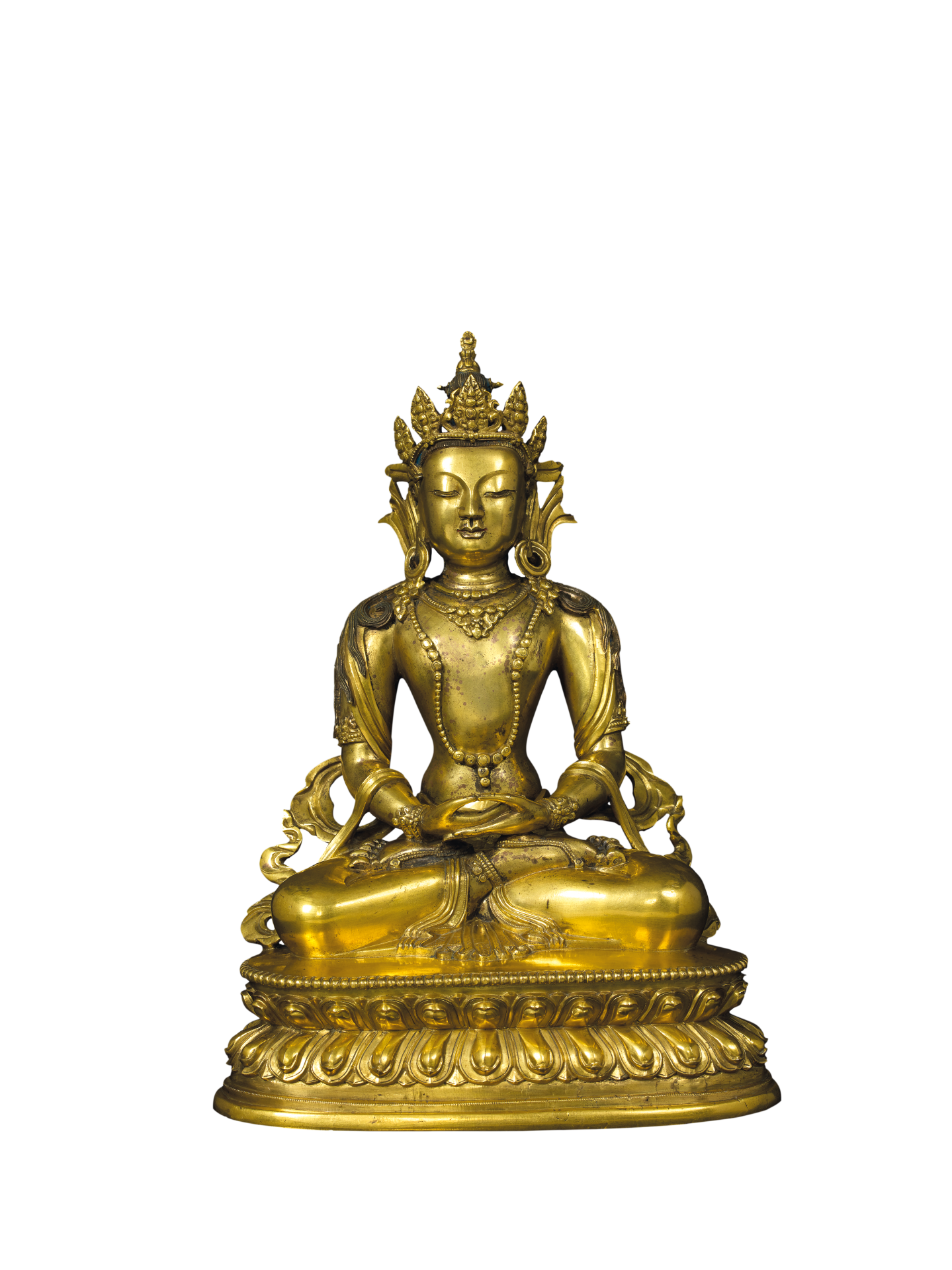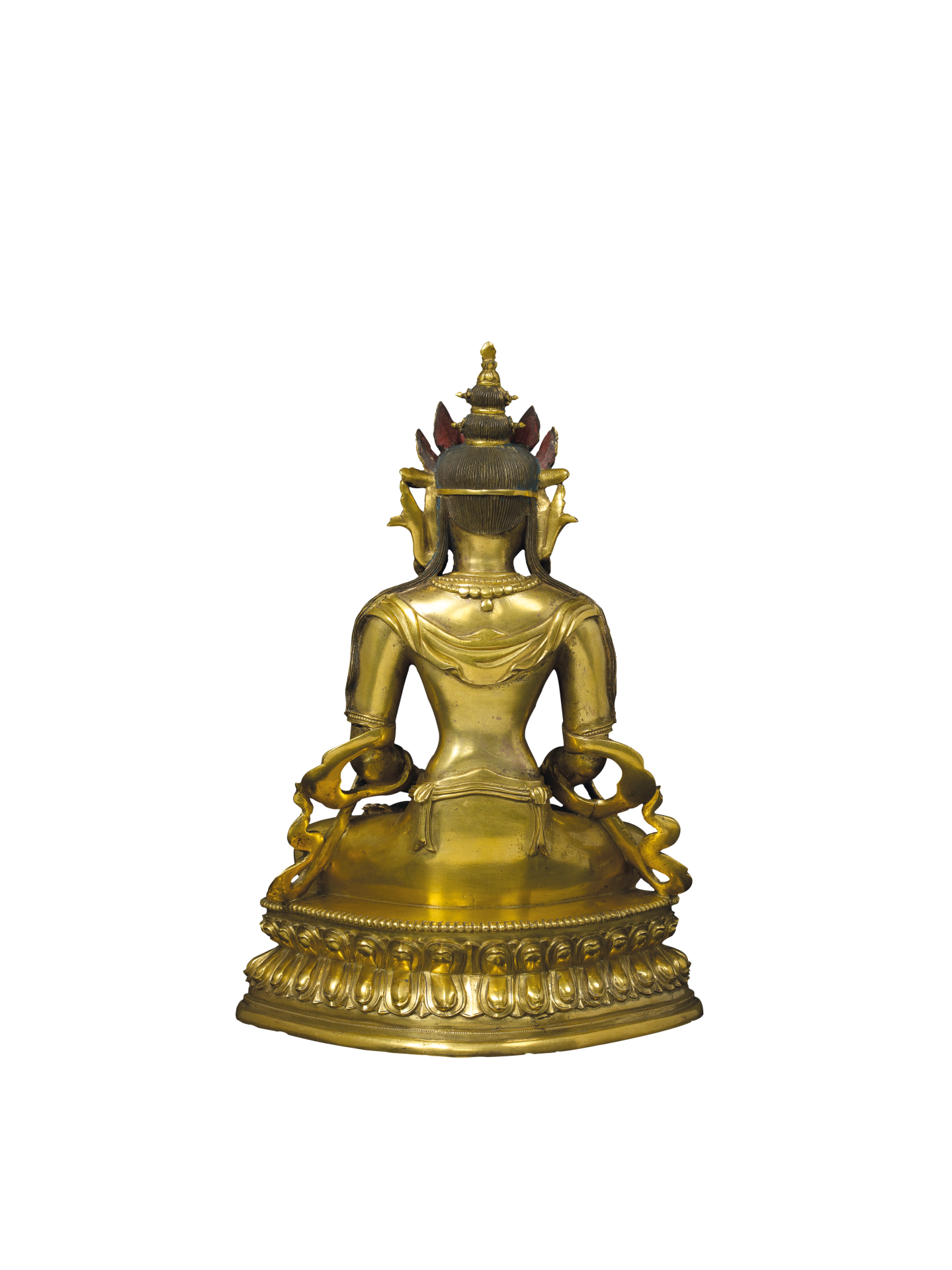Seated Amitāyus Buddha
This Amitāyus Buddha statue wears a tall topknot adorned with ornaments, surrounded by a five-leaf crown with ribbons hanging down the sides and their ends flying up to form a U-shape. A large ring weighs down each earlobe. Wisps of braided hair lay over the shoulders. The statue has an oval face with full cheeks, a broad round forehead, downcast eyes, a straight high nose with pointed tip, and rich full lips with gently lifted outer corners hinting a smile. The upper body is exposed apart from the shawl and a rich variety of jewellery. The lower body is wrapped in a long skirt. The legs are locked in ‘lotus posture’ (padmāsana) on a lotus pedestal, while the hands overlap in ‘meditation gesture’.
The circular perforation in the right palm was designed to secure the longevity bottle which is now missing. The statue has a V-taper upper body with broad shoulders and a narrow waist, a well-built physique, a bulging chest, streamline muscles around the waist, and smooth and wrinkleless legs. The silhouette of the body is totally revealed. Drapery folds only appear on the shawl and the hem of the skirt, largely as parallel catenaries indicating a formalised treatment. The double-lotus’ petals are long, fully abloom and with slightly upturned tips. The upper rim of the pedestal is decorated with generously sized continuous beads with smooth surface. The beads forming the ring encircling the base are small and exquisite.
Imperial statuary of the Qianlong reign (1736-1796) were produced in huge quantities and varieties which far exceeded that of the Kangxi reign (1662-1722) and Yongzheng reign (1678-1735). Since Amitāyus Buddha is auspiciously associated with longevity, Emperor Qianlong often ordered large quantities of seated Amitāyus to be produced by the palace atelier for his own birthday celebration and that of the Empress Dowager to invoke good health and longevity. Despite the absence of inscription, this Amitāyus statue was produced in the palace atelier of the Qianlong period as indicated by its superb casting skill and imperial aura apart from the brilliant golden light emitted from the gilt surface.

